Material sorting plants require intricate planning and consideration of numerous factors to ensure their efficiency and success. The fundamental design and equipment required for processing materials can vary significantly, making it crucial to tailor the plant design to the specific materials and machines involved.
By Tina Keough
Material sorting plants can be deceptively simple designs. Arriving material is tipped into an enclosure where it is run through a sortation system and then trucked to various locations for future processing or use. The sorting patterns are typically the same, however, the facilities and machines required to process the materials are quite different. As a result, the plant design to house sortation equipment, can be as varied as the materials and machines themselves. In other words, getting the correct plant design, and the most efficient sorting system for the plant, is imperative for investors to see a rapid return on investment.
First and foremost, remember that contractors play a substantial role in the development, design, and success of any sorting plant. It is crucial to ask two important questions: how long has this company been building plants, and what material streams are their specialty? Working with a contractor who has expertise in the desired material field is vital, as their experience and knowledge can significantly impact the project’s outcome. They will guide the design process, consider the potential or desired plant size, the specific sorting equipment required, and help to ensure the targeted output. These elements, among others, are essential to creating a plant that not only meets current needs, but is also adaptable for future demands.
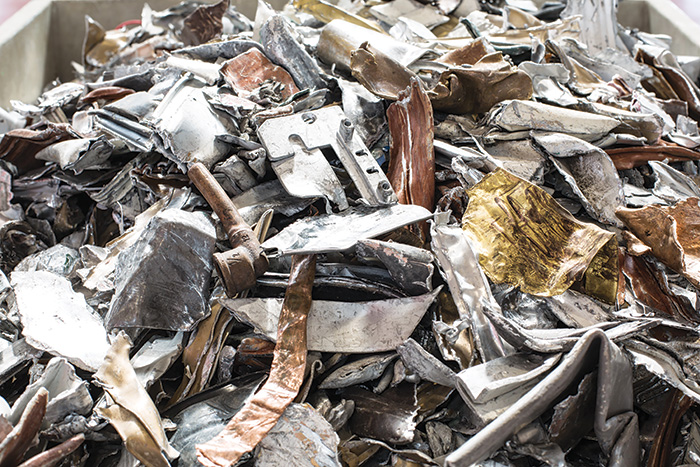
In short, collaborating with an experienced plant engineering company ensures that all aspects of the project are meticulously planned and executed, leading to a successful and sustainable sorting operation. With that bit of sage advice in mind, let’s explore three distinct material streams to see how the fundamental designs, necessary equipment, and time frames can vary.
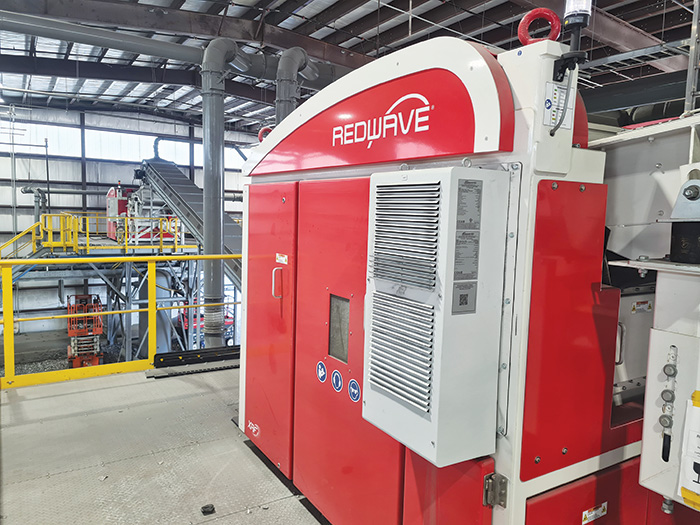
Metal Sorting Facility
Building a metal sorting plant requires meticulous planning, engineering, and consideration of various factors to ensure long-term success. The businessperson undertaking a metal plant project needs a clear objective from the start. Are they aiming to extract more copper from ZORBA, or seeking a purer form of another non-ferrous or precious metal? Regardless of the goal, the project’s success hinges on having the right facility and sorting machine at the core of the plant.
Finding an experienced contractor is crucial in the early stages of planning. Partnering with a contractor who has a proven track record in constructing and outfitting metal sorting plants can significantly streamline the process. These experts can provide valuable insights and recommendations, ensuring that the facility is designed and built to meet the specific needs and goals of the business.
They can also help to safeguard environmental and worker’s health issues in the planning and construction phases. This is critical as metal dust and fine particles generated during processing and handling pose significant health risks, including respiratory issues and skin irritation. Ensuring that proper ventilation systems and protective measures are in place is crucial for the safety of workers. Moreover, compliance with local environmental regulations and standards is non-negotiable, as it not only confirms the safety of the operation, but also protects the surrounding community and environment.
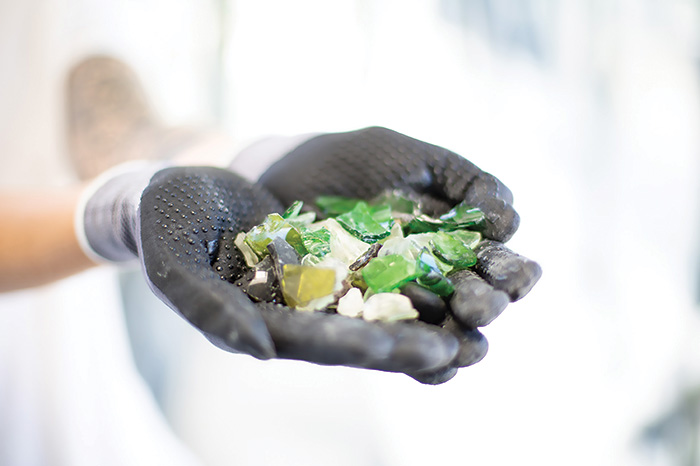
Photos courtesy of REDWAVE.
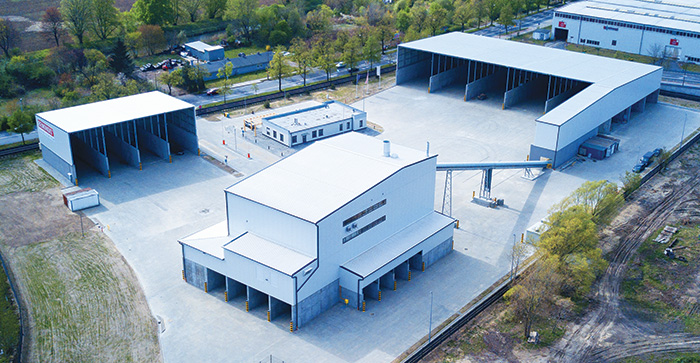
Economic factors also play a critical role in the decision-making process. The cost of machinery, installation, and ongoing maintenance must be weighed against the potential return on investment. Investing in high-quality, efficient sorting machinery can lead to significant cost savings in the long run, as these machines typically offer better performance, lower downtime, and reduced operational costs. Experienced plant contractors and design teams can advise on machinery integrations needed to match the correct machine for the material. They can also help determine the size and shape of the necessary facility and design a system to ensure maximum yield and materials flow. For reference, a minimum plant size using a single machine line can fit into a 65’x50′ area. Certain XRF sorters, available in smaller or more compact dimensions using an innovative free-fall design rather than long and bulky conveyor belts, can be easily integrated into a modular design, making them suitable for space-restricted facilities.
Compact machinery does not mean less powerful. These workhorses can quickly move ZORBA with the correct feeder line installed. For example, a basic line starts with a feeder bunker to meter the material onto the first conveyor. If the material requires it, a cleaning system should be installed. This can include a screening feeder to remove undersized material and an aspiration system to remove light waste, foam, and some non-metallics that remain. These steps prepare the material perfectly for the sensor sorting task at hand, and final product quality will speak for itself. A more complex plant, for less prepared material could include more than the previously mentioned. Common machinery could include shredders or shears, screens, magnets, eddy current separators, and different optical sorting machines.
The timeline for building a metal sorting plant depends on various factors, including customer requirements, engineering or design complexity, plant size (especially for a Greenfield plant), availability of parts or construction materials, and transportation costs. For a small plant, a timeline of about half a year from initial contact to final commissioning is realistic.
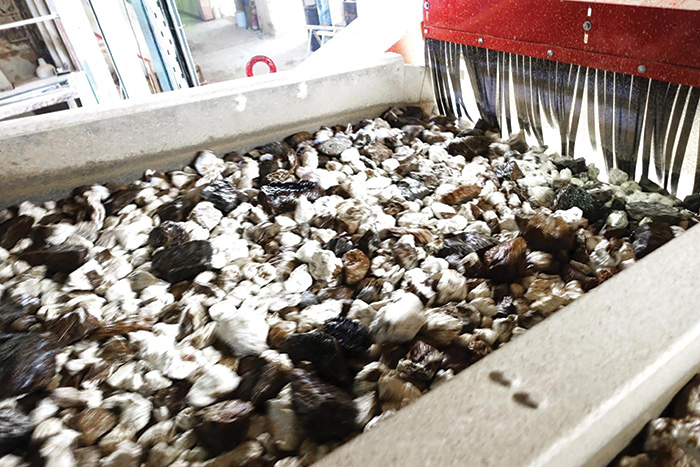
Glass Sorting Facility
Constructing a glass sorting facility is more complex than building a metal sorting plant due to the additional steps required before final color sorting. Like metal plants, environmental and worker health considerations are essential and must be integrated with the economic goals of the cullet producer (aka the Beneficiator). Additionally, since furnace quality specifications for glass often call for 98 percent purity, understanding the composition of the inbound glass is crucial to determine the correct processing methods.
The initial steps involve determining the structure, size, and desired output capacity of the facility. For smaller plants, selecting a versatile sorting line capable of performing multiple tasks and quickly transforming the cullet into a purer product is the goal. MRF glass loads often contain non-recyclable materials like lead-glass, heat-resistant glass, and ceramics (CSP). Therefore, the initial steps in a glass facility must involve separating these items along with any plastics, metals, fines, organics, and other unwanted contaminants, collectively known as Non-Glass Residues (NGR). The system must be designed to fit the available footprint and include the necessary stages: crushing, size screening, 3D object screening, metal separation (using magnets and eddy currents), wind shifting, and optical sorting.
Designing the sorting line and selecting the correct sorter is crucial. The right design can eliminate the need for multiple machines, potentially speeding up project completion and commissioning. There are many types of sorters available, but choosing machines with multi-faceted capabilities can prevent extended production delays. For example, a three-way sorter, adaptable for plastic and metal applications and featuring a modular design, is highly efficient for removing NGRs from the infeed stream. Typically, a MRF infeed stream may require two to four sorting layers through multiple sorters to achieve the desired final product. However, a three-way optical sorter with an x-shot design, can eliminate extra passes by sorting out NGR materials, which can constitute 10 to 30 percent of MRF streams, while preparing the glass for final color sorting (e.g., flint, amber, and green). This approach can minimize the required facility space and increase processing speed, crucial for economic viability and final product accuracy.
Keep in mind that it is not uncommon for accurate color sorting to require up to five sorting steps and finding a contractor experienced with the environmental and employee safety requirements specific to glass processing is imperative. Glass dust and fine particles generated during processing and handling pose hazards such as respiratory, eye, and skin irritation. Ensuring that the contractor can provide references to completed facilities meeting safety standards, innovative ideas, and desired outputs should be a top priority in the initial design phase.
Depending on the size and machinery required, a facility can take between 12 to 18 months to complete as it must be capable of housing the necessary crushers, optical sorters, screening machines, extraction systems, and conveyor lines. This comprehensive approach ensures the construction of an efficient, safe, and economically viable glass sorting facility.
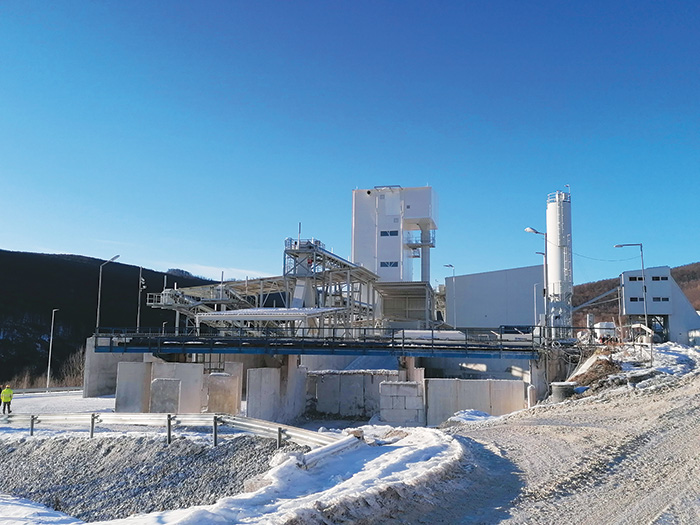
Mining Sorting Facility
Building a mineral sorting facility is a complex endeavor that also requires meticulous planning and execution. Considering factors such as material type, processing capacity, space optimization, dust control, and sorting stages, will ensure that each facility is designed to meet specific operational needs. Mineral sorting facilities, not unlike metal and glass recycling plants, must be designed with adaptability and efficiency in mind as each material requires a slightly different process.
The footprint of a mineral sorting facility varies depending on the type of material being processed and the capacity requirements demanded by the customer. For instance, a batch process setup can be designed to occupy a minimal footprint, making it ideal for smaller operations or sites with space constraints. However, larger facilities with higher capacity needs may require more expansive layouts. The flexibility in design ensures that each facility is optimized for both efficiency and space used.
The sorting process involves several critical steps, each tailored to achieve optimal material sorting. The first step is the primary crushing where raw materials are broken down into manageable sizes before screening and initial separation into different size fractions. Depending on the material, a secondary crushing and screening may be necessary to further reduce the size of the particles and to ensure any “tailings” are removed from the material stream. At this point, the material is washed to remove any dust or debris which could inhibit the sorting process.
After the crushing, screening, and washing stages, the material is ready to pass through the sorting machine. As the most crucial process in the sorting line, optical sorters are used to achieve precise separation, with the process tailored to different grain sizes depending on the material. The number of sorting stages required depends on the material itself and the customer’s specific requirements. Most plants use a single-stage sorting process. However, more complex materials may require a double-stage sorting solution. In the first stage, impurities are typically removed, while the second stage sorts the material based on additional criteria, such as brightness or purity.
To optimize space, elevator conveyors can be used just as with their recycling counterparts. These are particularly effective for non-abrasive and non-sticky materials. However, for abrasive materials, standard conveyors are preferred to avoid excessive wear and tear. Sticky materials also necessitate the use of standard conveyors to prevent clogging and operational issues.
Maintaining a clean and safe environment is crucial in mineral sorting facilities. Effective dust control measures are imperative to protect both the equipment and the workers. Dedusting systems at sorting stations and conveyor transfer points are essential to minimize airborne particles. These systems help in maintaining air quality and ensuring compliance with health and safety regulations.
The journey from initial design to commissioning of a mineral sorting facility typically spans about one year. This timeframe includes plant design, detailed engineering, fabrication, transportation to the site, installation, startup, and commissioning. A single optical sorter, an integral part of the facility, usually has a delivery time of approximately five months from the date of order.
Achieving Optimal Efficiency
Material sorting plants, despite their seemingly simple designs, require intricate planning and consideration of numerous factors to ensure their efficiency and success. The fundamental design and equipment required for processing materials can vary significantly, making it crucial to tailor the plant design to the specific materials and machines involved. For investors, achieving a rapid return on investment hinges on getting the correct plant design and the most efficient sorting system.
First and foremost, contractors play a pivotal role in the development, design, and success of any sorting plant. An experienced plant engineering contractor will guide the design process, considering factors such as plant size, sorting equipment, the alignment of all equipment and desired output. These elements are critical to creating a plant that meets current needs and is adaptable for future demands.
In short, when dealing with metals, glass, or minerals, each material stream presents unique challenges and opportunities. By addressing these specific needs through careful planning and expert guidance, the construction and operation of sorting plants can achieve optimal efficiency and long-term financial success. Taking advice from the experts could save time, money, and headaches on your project endeavors. | WA
Tina Keough is the U.S. Marketing Manager for REDWAVE Solutions US LLC. With 25 years of self-employment experience, she honed her marketing skills and now sits on the board of directors for two companies. Tina has published several articles on recycling and is passionate about promoting green technologies to create a healthier planet for future generations. She can be reached at [email protected].
With more than 25 years of experience in designing and building cutting-edge recycling plants, REDWAVE is a leader in the industry, providing turnkey solutions that incorporate advanced sensor-based sorting technologies. Their expertise spans the entire process from initial consultation and feasibility studies to the delivery and installation of high-tech sorting machines. REDWAVE’s holistic approach ensures maximum efficiency and purity in sorting metals, glass, and other recyclables, meeting the highest industry standards and promoting sustainable practices globally. By combining innovative technology with unparalleled industry knowledge, REDWAVE continues to set the standard for effective and efficient recycling solutions. For more information email [email protected] or visit www.redwave.com.
